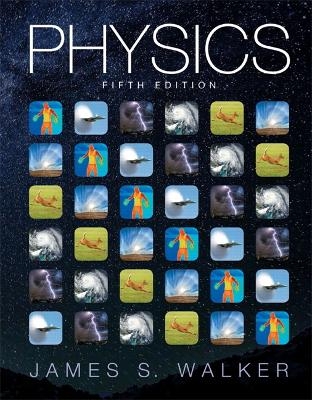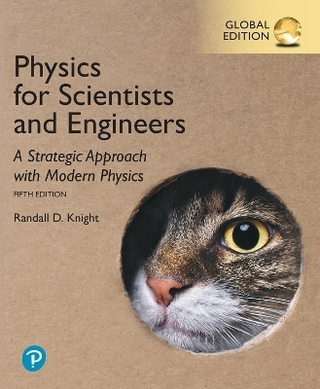
Accelerator X–Ray Sources
Wiley-VCH Verlag GmbH (Hersteller)
978-3-527-61030-3 (ISBN)
- Keine Verlagsinformationen verfügbar
- Artikel merken
This first book to cover in-depth the generation of x-rays in particle accelerators focuses on electron beams produced by means of the novel Energy Recovery Linac (ERL) technology. The resulting highly brilliant x-rays are at the centre of this monograph, which continues where other books on the market stop. Written primarily for general, high energy and radiation physicists, the systematic treatment adopted by the work makes it equally suitable as an advanced textbook for young researchers.
Richard M. Talman is Professor of Physics at Cornell University, Ithaca, New York. After receiving B.A and M.A. at the University of Western Ontario, he received his Ph.D. at the California Institute of Technology in 1963. Since then he has been at Cornell, accepting a full professorship for Physics in 1971. He has spent terms as visiting scientist at Stanford(2), CERN(2), Berkeley(2) and Saskatchewan, and served as leader of the Instrumentation and Diagnostics Group at the SSC project in Dallas. He has given courses on accelerators at Chicago, Austin, Rice, and Yale. Initially a particle physics experimentalist, Professor Talman has been engaged in the design of a series of accelerators, with recent emphasis on their use for x-ray production.
Preface.1. Beams of Electrons or Photons.1.1 Preview.1.2 Coordinate Definitions.1.3 One-dimensional Transverse Propagation Equations.1.4 Transfer Matrices for Simple Elements.1.4.1 Drift Space.1.4.2 Thin Lens1.4.3 Thick Lens.1.4.4 Erect Quadrupole Lens.1.5 Elliptical (in Phase Space) Beams.1.6 beam Envelope E (s).1.7 Gaussian beams: Their Variances and Covariances.1.8 Pseudoharmonic Trajectory Description.1.9 Transfer matrix Parametrization.1.10 Reconciliation of Beam and lattice Parameters.1.10.1 Beam Evolution Through a Drift Section.1.10.2 Beam Evolution Through a Thin Lens.References.2. Beams Treated as Waves.2.1 Preview.2.2 Scalar Wave Equation.2.3 The Short Wavelength, Geometric Optics Limit.2.3.1 Determination of Rays from Wavefronts.2.3.2 The Ray Equation in Geometric Optics.2.3.3 Obtaining Phase Information from Intensity Measurement.2.4 Wave Description of Gaussian Beams.2.4.1 Gaussian Beam in a Focusing Medium.2.4.2 Spatial Dependence of a Wave near a Free Space Focus.2.4.3 The ABCD Law.2.4.4 Optics Using Mirrors.2.4.5 Wave Particle Duality for Electrons.2.5 Synchrotron Radiation: Waves or Particles?2.6 X-ray Holography and Phase Contrast and Lens-free Imaging.References.3. Synchrotron Radiation from Accelerator Magnets.3.1 Capsule History of Synchrotron Light Sources.3.2 Generalities.3.3 Potentials and Fields.3.4 Relations Between Observation Time and Retarded Time.3.5 Evaluation of Electric and magnetic Fields.3.5.1 Radial Field Approximation.3.6 Total Power Radiated and Its Angular Distribution.3.7 Spectral Power Density of the Radiation.3.7.1 Estimate of Frequency Spectrum from Pulse Duration.3.7.2 Radial Approximation.3.7.3 Accurate Formula for Spectral Power Density.3.8 Radiation from Multiple Charges.3.9 The Terminology of "Intensity" Measures.3.10 Photon Beam Features "Inherited from" the Electron Beam.3.11 Intensity Estimates for Bending Magnet Beams.References.4. Simple Storage Rings.4.1 Preview.4.2 The Uniform Field Ring.4.3 Horizontal Stability.4.4 Vertical Stability.4.5 Simultaneous Horizontal and Vertical Stability.4.6 Dispersion.4.7 Momentum Compaction.4.8 Chromaticity.4.9 Strong Focusing.5. The Influence of Synchrotron Radiation on a Storage Ring.5.1 Preview.5.2 Statistical Properties of Synchrotron Radiation.5.2.1 Total Energy Radiated.5.2.2 The Distribution of Photon Energies, "Regularized Treatment".5.2.3 Randomness of the Radiation.5.3 The Damping Rate Sum Rule: Robinson's Theorem.5.3.1 Vertical Damping.5.3.2 Longitudinal Damping.5.3.3 Horizontal Damping and Partition Numbers.5.4 Equilibrium Between Damping and Fluctuation.5.5 Horizontal Equilibrium and Beam Width.5.6 Longitudinal Bunch Distributions.5.6.1 Energy Spread.5.6.2 Bunch Length.5.7 "Thermodynamics" of Wiggler-dominated Storage Rings.5.7.1 Emittance of Pure Wiggler Lattice.5.7.2 Thermodynamic Analogy.References.6. Elementary Theory of Linacs.6.1 Acknowledgement and Preview.6.2 The Nonrelativistic Linac.6.2.1 Transit Time factor.6.2.2 Shunt Impendence.6.2.3 Cavity Q, R/Q, and Decay Time.6.2.4 Phase Stability and Adiabatic Damping.6.2.5 Transverse Defocusing.6.3 The Relativistic Electron Linac.6.3.1 Introduction.6.3.2 Particle Acceleration by a Wave.6.3.3 Wave Confined by Parallel Planes.6.3.4 Circular Waveguide.6.3.5 Cylindrical "Pill-box" Resonator.6.3.6 Lumped Constant Model for One cavity Resonance.6.3.7 Cavity Excitation.6.3.8 Wave Propagation in Coupled Resonator Chain.6.3.9 Periodically Loaded Structures.6.3.10 Space Harmonics.7. Undulator Radiation.7.1 Preview.7.2 Introduction.7.3 Electron Orbit in a Wiggler or Undulator.7.4 Energy Radiated From One Wiggler Pole.7.5 Spectral Analysis for Arbitrary Longitudinal Field Profile.7.6 Spectrum of the Radiation from a Single Pole.7.6.1 Orbit Treated as Arc of Circle.7.6.2 Radiation from a Single, Short, Isolated, Magnet, K" 1.7.7 Coherence from Multiple Deflections.7.8 Phasor Summation for K " 1.7.9 Photon Energy Distributions.7.9.1 Energy Distribution from the n = 1 Undulator Fundamental.7.10 Undulator Radiation for Arbitrary K Value.7.10.1 Analytic Formulation.7.10.2 Diffraction Grating Analogy.7.10.3 Numerical/Graphical Representation of Undulator Radiation.7.10.4 Approximation of the Integrals by Special Functions.7.10.5 Practical Evaluation of the Series.7.11 Post-Monochromator Profile.7.11.1 Monochromatic Annular Rings.7.11.2 Numerical Investigation of Undulator Rings.7.11.3 Is the forward Undulator Peak Subject to Angular Narrowing?References.8. Undulator Magnets.8.1 Preview.8.2 Considerations Governing Undulator Parameters.8.3 Simplified radiation Formulas.8.4 A Hybrid, Electro-permanent, Asymmetric Undulator.8.4.1 Electromagnet Design.8.4.2 Permanent magnet Design-Small Gap Limit.8.4.3 Combined Electro-/Permanent - Magnet Design.8.4.4 Estimated X-ray Flux.References.9. X-Ray Beam Line Design.9.1 Preview.9.2 Beam Line Generalities.9.3 Accelerator Parameters.9.4 Bragg Scattering and Darwin Width.9.5 Aperture-defined Beam Line Design.9.5.1 Undulator Radiation, n = 1, Negligible Electron Divergence.9.5.2 Effect of Electron Beam Emittances on Flux and Brilliance.9.5.3 Brilliance with K > 1 and n > 1.9.6 X-ray Mirrors.9.6.1 Specular Reflection of X-rays.9.6.2 Elliptical Mirrors.9.6.3 Hyperbolic Mirrors.9.7 X-ray Lenses.9.7.1 Monochromatic X-ray Lens.9.7.2 Focusing a Monochromatic Undulator, Radiation Ring.9.7.3 Undulator-specific X-ray Lens.9.7.4 Lens Quality.9.8 Beam Cameras.9.8.1 The Pin-hole Camera.9.8.2 Imaging the Beam with Visible Light.9.8.3 Practicality of Lens-based, X-ray Beam Camera?9.9 Aperture-free X-ray Beam Line Design.9.9.1 Aperture-free Rationale.9.9.2 Aperture-free Microbeam Line Based on Lenses.9.9.3 Effective Lens Stop Caused by Absorption.9.9.4 Choice of Undulator Parameter K.9.9.5 Estimated Flux.9.9.6 Estimated Brilliance and Qualifying Comments.References.10. The Energy Recovery Linac X-Ray Source.10.1 Preview.10.2 Introduction.10.3 Emittance Evolution in a DC Electron Gun.10.4 Qualitative Description of Lattice Design Issues.10.5 Isochronous Arc Design.10.6 Evolution of Betatron Amplitudes through the Linac Sections.10.6.1 Deceleration through Linac Section to Dump.10.6.2 Triplet Design.10.6.3 Acceleration through the High Energy Linac Section.10.7 Emittance Growth Due to CSR and Space Charge.References.11. A Fourth Generation, Fast Cycling, Conventional Light Source.11.1 Preview.11.2 Low Emittance Lattices.11.3 Production of High Quality X-ray Beams.11.3.1 A Formula for Brilliance B.11.3.2 A Strategy to Maximize B.11.3.3 Hypothetical Utilization of an Existing Large Ring.11.4 Acceleration Scenario.11.5 Power Considerations.11.5.1 Average Power.11.5.2 Instantaneous Power.11.6 Critical Components and Parameter Dependencies.11.7 Trbojevic-Courant Minimum Emittance Cells.11.7.1 Basic Formulas.11.7.2 Thin Lens Treatment.11.7.3 Thick Lens Treatment.11.7.4 Zero Dispersion Straight Sections.11.7.5 Nonlinearity and Dynamic Aperture.11.8 Emittance Evolution During Acceleration.11.9 Touschek Lifetime Estimate.11.10 Performance as X-ray Source.11.10.1 Brilliance from Short Undulator.11.10.2 Refinement of Brilliance Calculation.References.12. Compton Scattered Beam and "Laser Wire" Diagnostics.12.1 Preview.12.2 Compton Scattering Kinematics.12.3 Some Specialized Laser, Electron Beam Configurations.12.3.1 Back-scattered Photons.12.3.2 Orthogonal Photon Incidence in the Laboratory.12.3.3 Orthogonal Electron Frame Incidence.12.4 Total Compton Cross Section.12.5 The Photon Beam Treated as an Electromagnetic Wave.12.5.1 Determination of the Electron's Velocity Modulation.12.5.2 Undulator Parametrization of Electron Motion in a Wave.12.6 Undulator Fields in Electron Rest Frame.12.6.1 Some Formulas from Special Relativity [7].12.6.2 Treatment of an Undulator magnet as an Electromagnetic Wave.12.7 Classical Derivation of Thomson Scattering.12.7.1 Introduction.12.7.2 Free Electron Oscillating in Electromagnetic Wave [5].12.7.3 Electric Dipole Radiation [6].12.7.4 Scattering Rate Expressed as a Total Cross Section.12.8 Transformation of Photon Distributions to the Laboratory.12.8.1 Solid Angle Transformation.12.8.2 Photon Energy Distributions to the Laboratory.12.8.3 A Theorem Applicable to Isotropic Distributions.12.8.4 Energy Distribution of Undulator radiation.12.9 Rate Estimates for a Laser Wire Diagnostic Apparatus.12.9.1 The Nonrelativistic Limit.12.9.2 Laser Wire Treated as Undulator.12.9.3 Laser Wire Treated via Electron real Frame.12.9.4 Invariant Cross Section Applied to Laser Wire.12.9.5 Bunched Beam Rates.13. Space Charge Effects and Coherent radiation.13.1 Acknowledgement and Preview.13.2 Introduction to the String Space Charge Formalism.13.3 Self-force of Moving Straight Charged String.13.4 Self-force of Moving Straight Charge Ribbon.13.5 Curve End Point Determination.13.6 Field Calculation.13.7 "Regularization" of the Longitudinal Force.13.8 Coherent Synchrotron Radiation.13.9 Evaluation of Integrals.13.10 Calculational Practicalities.13.11 Suppression of CSR by Wall Shielding.13.12 Effects of Entering and Leaving Magnets.13.13 Space Charge Calculations Using Unified Accelerator Libraries.13.13.1 Numerical Procedures Used by UAL.13.13.2 Program Architecture.13.13.3 Numerical Procedures.13.13.4 Comparison with TRAFIC4 [24].References.14. The X-ray FEL.14.1 Absorption and Spontaneous and Stimulated Emission.14.2 Closed and Open FELs.14.3 Interpretation of Undulator Radiation as Compton Scattering.14.4 Applicability Condition for Semi-Classical Treatment.14.5 Comparison of Storage Ring, ERL, and FEL.References.Index.
| Verlagsort | Weinheim |
|---|---|
| Sprache | englisch |
| Maße | 187 x 246 mm |
| Gewicht | 1054 g |
| Themenwelt | Naturwissenschaften ► Physik / Astronomie |
| Technik ► Maschinenbau | |
| ISBN-10 | 3-527-61030-8 / 3527610308 |
| ISBN-13 | 978-3-527-61030-3 / 9783527610303 |
| Zustand | Neuware |
| Haben Sie eine Frage zum Produkt? |
aus dem Bereich


